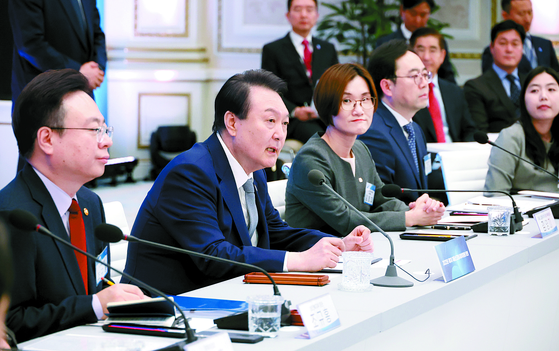Time to create the department of population

Chung Un-chan
The author, a former prime minister and former president of Seoul National University, is the chairman of the Korea Institute for Shared Growth.
Korean couples had faithfully complied with the government’s catchphrase of “Let’s have only two children without any sex bias and raise them well!” — until the 1970s. But the situation completely changed. Korea’s total fertility rate, or the average number of children a woman delivers over her lifetime, fell to 2.1 in 1983 and to 1.3 in 2002. In the final quarter of last year, the figure likely plunged to 0.6, a record low. Despite warnings early on, the government’s response was laid back. In the meantime, Korea became a country with its population declining at the fastest pace. As a former prime minister from 2009 to 2010, I confess to my partial responsibility for the ominous development.
The country’s future is not bright. A number of small cities already suffer a population crisis, as seen in 1,587 elementary schools with less than 10 first graders in 2023, not to mention a serious security risk from decreased conscripts in the divided land.

Opponents don’t think so. They believe that Korea’s per capita GDP will rather increase as technological innovations can compensate for the country’s downsized GDP. Unless the birth rate plunges to zero percent, we don’t have to worry about it over the long term, they claim. But such optimism ignores the economic gloom from the rapid population decline.
Since the enactment of the Basic Act on Low Births and Ageing Society in June 2005 followed by the establishment of the Presidential Committee on Ageing Society and Population Policy three months later, the government has renewed the five-year basic plan to tackle the demographic challenge. But the scorecards are shabby. The following is my proposal to improve the system.
First, the government must define the goals of the basic plan more specifically than before. As the basic plan seeks the abstract goal of “improving the quality of life,” the number of relevant policies exceeds 200, and most of the budget is indirect subsidies. As a result, direct subsidies to families with infants, toddlers and children were only 17 trillion won ($12.9 billion) — nearly one-third of the 52-trillion-won budget aimed to address the low birthrate — in 2022. If young people want to get married and have children, they will want more palpable support such as an unconditional provision of 100 million won for every newborn or a certain amount of childbirth bonus followed by 1 million won a month until the baby graduates from high school.
Second, the government must confine the scope of the subsidy recipients to the youths who want to get married and have a baby. The young generations these days do not take marriage and childbirth for granted. The time and money needed to persuade the young to get married and have a baby is running out. The government must have a strategy of selection and concentration. Once marriage and childbirth become a norm, other youths will also follow the steps.
Third, marriage and childbirth should not give young people economic disadvantages or excessive burdens. For instance, an increasing number of newlyweds put off the reporting of their marriage to the authorities due to the disadvantages they suffer when they try to get housing loans. The demerit only helps delay their first childbirth and lower the country’s birthrate even further. The government must also devise drastic measures to strengthen our public education system to lower the excruciating cost burden for private academies.
Fourth, the government must raise the birthrate by embracing a diverse type of family, including babies born out of wedlock. The number of households without marriage in Korea surged to 500,000 in 2022 from 200,000 in 2015. But they still remain a blind spot of government policy, not to mention the public’s negative attitude toward them. If the government can incorporate them into the system, the negativity will be alleviated, which in turn will lead to more childbirths. The share of childbirths by unmarried couples is over 60 percent in France, but the ratio in Korea is less than three percent.
Fifth, a command center should be established to coordinate various government demographic programs. Government policies to battle the low birth crisis have not been integral since long ago. At this juncture, the government should create a department of population to consistently deal with the issue after combining the budget and similar functions of each ministry, along with exponentially reinforcing the power and size of the Presidential Committee on Ageing Society and Population Policy.
Last but not least, the government must encourage the corporate sector to join in its crusade to solve the demographic conundrum. The success of the policy depends on the compatibility of work and life. Companies must uphold the work-life balance to help their employees to devote more time to their children. It will be even better if the government can give companies incentives such as a tax deduction for investments by family-friendly companies.
For the government to assure the people of its strong will to take care of children from their birth, the law and system must send them a clear message as quickly as possible.
Translation by the Korea JoongAng Daily staff.










with the Korea JoongAng Daily
To write comments, please log in to one of the accounts.
Standards Board Policy (0/250자)